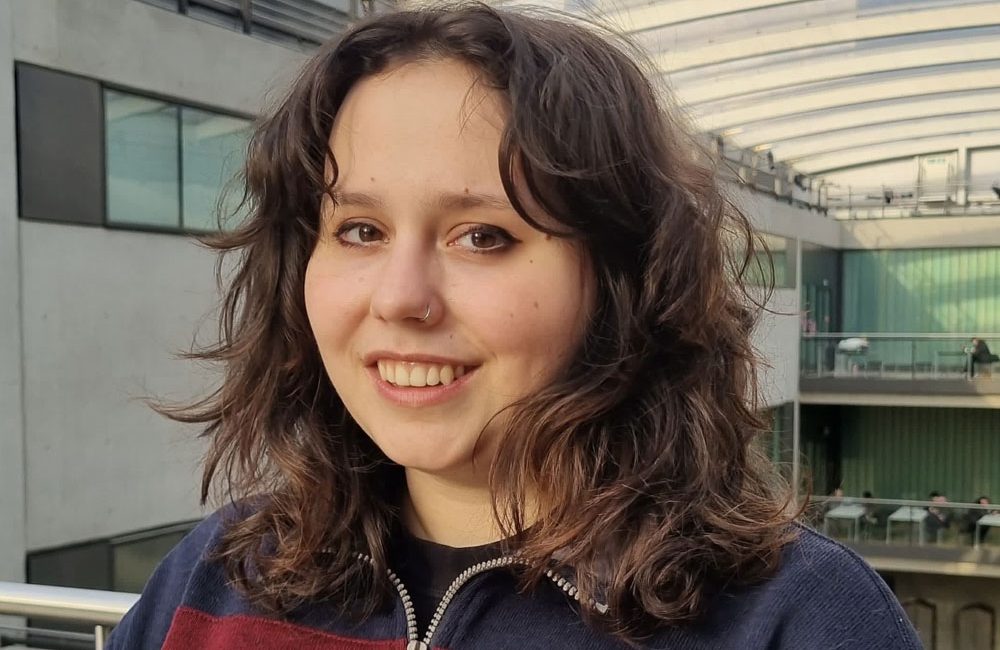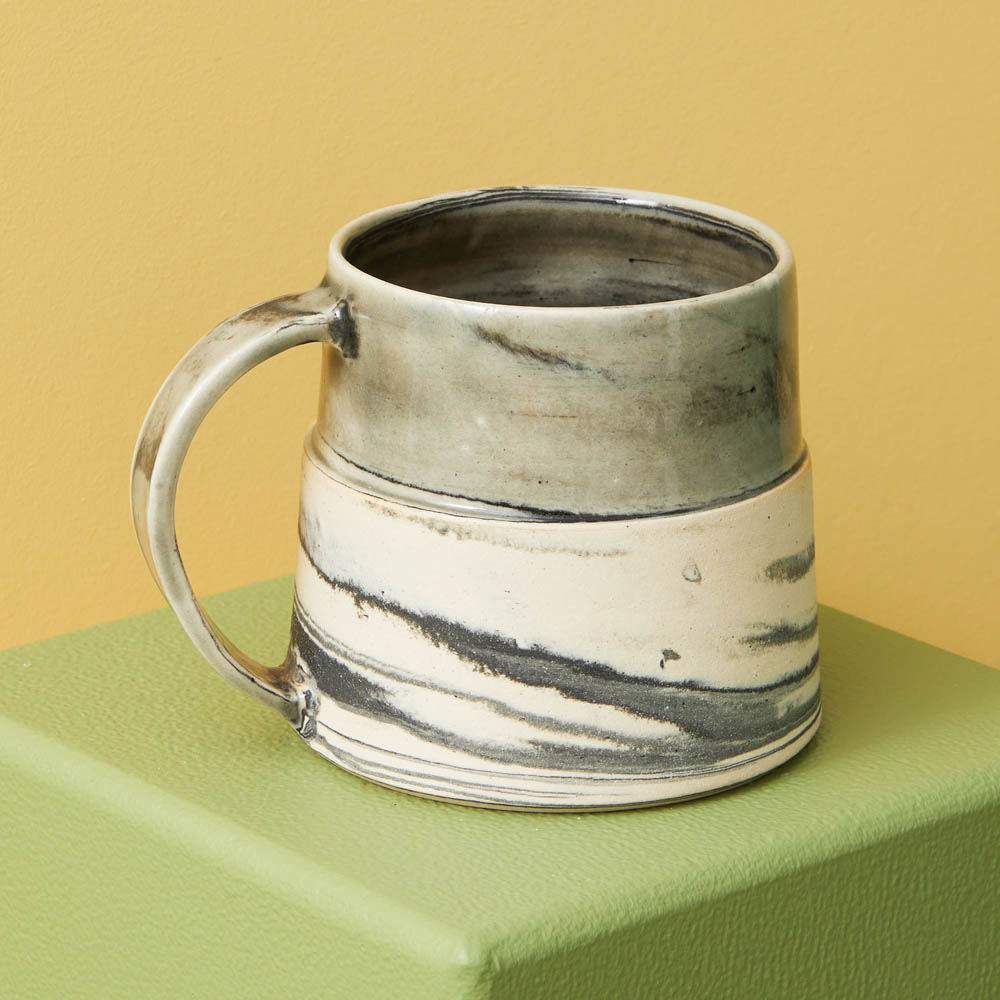What attracted you to your craft?
The process of making has always driven my practice, I’m a self-taught potter and come from
a Fine Art background. I used to work with analogue and alternative photography
techniques but over time my practice has developed into a predominately ceramic one. I felt
that something more physical and material was missing, which I found in the hands-on
nature of working with clay. It allows me to connect with the material and grounds me in a
way that other mediums don’t.
What does your typical day look like?
Currently my days are split between different spaces. My time is divided between the studio
at CSM (Central Saint Martins) where I tend to focus on the more conceptual aspects of my
practice, and a shared pottery studio where most of the making happens. I often travel
between these studios which has become a space for me to think and reflect.
I’m typically either working on a commission, doing studio admin work, refining my skills and
experimenting with new ideas or developing products. As an independent maker, I’m
responsible for all aspects of my business, so I have to wear many hats, which takes up a lot
of my day! Making pottery is a slow, lengthy process and has a lot of behind-the-scenes
work, but I find it incredibly fulfilling and rewarding.

Does your product have an environmental focus/does it support the circular
economy?
I approach my craft with sustainability in mind, prioritising quality over quantity. For
example, clay can be recycled until the first firing, reducing the raw materials and waste. I
carefully consider what I fire- only firing pieces that meet my quality checks and have a
purpose, whether for a commission or as tests to develop my practice and products.
Firing ceramics is the most energy-intensive part of the process. Clays such as the stoneware
and porcelain I use are fired twice and to temperatures around 1240°C. By being selective
with what I fire, I can reduce this as much as possible. I try to be as conscious as I can about
my material choices and focus on slow, small-batch production, aiming for quality and
durable designs.
Ceramics are very long-lasting, and when made thoughtfully and cared for properly, can last
for generations. In archaeology, ceramic pots or fragments are often the most commonly
found objects, it’s incredible to see how they survive over hundreds of years and their
importance in material culture.
What is the USP (unique selling point) for your products?
My designs are minimal and contemporary. I aim to create a design language that pays
attention to the craft, highlighting the process and clay as a material. The angular shapes
and marbled or slip patterns are unique features of my work, emphasised by the minimal
and deliberate glazing, which allows the clay’s materiality, movement and tactility of the clay
to show through.
I would describe my work as sleek, with sharp lines, distinctive forms and relatively minimal
colouring. The marbling creates unique, one-off pieces, which I enjoy because it means
there is always an element of surprise. No two pieces are identical.


Where do you find / source your inspiration for designs?
A lot of my inspiration comes directly from the process of making. The marbling and
decorating with slip or glaze on the wheel creates patterns that come directly from the
movement of the wheel itself. This allows me to create unique and organic patterns that
emphasis the process and movement of making.
I also find influence in Dutch design (a part of my heritage), Scandinavian design and the
Bauhaus movement- styles which are thoughtful and purposeful, emphasising simplicity,
function and clean lines.
Please can you provide a little more info on how your interest in design started and
developed?
I spent time working as the artist-in-residence at a school where they had ceramic facilities.
There I had the opportunity to explore clay as a medium for the first time and to teach
myself how to throw. I learnt a lot about the technical aspects of clay work, from recycling to
loading and firing a kiln, to different methods of making pots. I was able to spend hours and
hours at the wheel every day and to get a feel for the medium. I later joined a community
studio where I learnt a lot from other potters who have become important people in my life.
Through this, my passion for making and designing functional wares developed. It’s been a
very rewarding experience for which I am very grateful.
I find joy in the simplicity of making functional items that find a place in people’s homes.
There’s something so special about making pieces that find a way into someone’s routine
and become part of their lives. I love seeing how people use my items and where they end
up.
Do you have any favourite items in the collection?
I do! The black and white stoneware mugs have become one of my favourite pieces to make,
they are a style that I feel reflects my design philosophy. I previously only made them in
porcelain, but this new version was commissioned by not just a shop and has become a
personal favourite and best seller.
What I love most about them is the textural contrast between the unglazed and glazed
sections- the raw clay feels warm and tactile in your hands whilst the glaze has a smooth,
cooler finish. The contrast between the textures and the black and white colour scheme
allows the material to shine through.
How would you summarise your collection in a few sentences, words?
I would describe my collection as functional, beautiful and deliberate. Each piece is carefully
crafted, paying attention to the small things that make an object special.
Does your work have a social impact?
When people use a mug or cup that has been thoughtfully handcrafted with care, it can
create a meaningful experience in their daily lives. Handmade ceramics offer a different
experience from mass-produced items. They foster a connection with the consumer, the
maker and the history of a craft. It encourages a shift away from the disposable and fastfashion mindset that is so prevalent these days. It helps us slow down and there is
something about clay and ceramics that is just so grounding, a material that originates
directly from the earth.
I enjoy designing and making functional ceramics because they bridge the space between
art and craft, connecting to people in a way that art doesn’t always manage to do. It’s a way
to connect with others- a simple object can hold so much care and meaning.
Outside of my own making, I also facilitate art and clay workshops, often working with
children. I love introducing them to the joy of working with your hands and encouraging
creativity and self-expression. It’s very rewarding to be able to share my love for the medium
with others.
What are your hopes for the future/ where would you like to take your design
career / collection?
I hope to continue expanding my product range, focusing on building a core collection of
pieces that balance design, form, and function. I’d like to bring in some more of my fine art
background into my ceramics, perhaps through one-off, larger or sculptural pieces, it’s
always exciting to push the boundaries of my work. Whilst functional work continues to
drive my ceramic practice, I’m always interested in the space between craft and art and it is
something I’d like to explore more within my pottery too.

